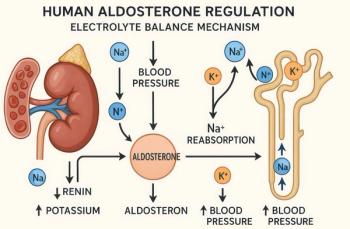
Obesity Still Plagues the US, But Rates Are Declining in Some States: The Trust for America's Health Report
Obesity rates in states where it has leveled at 35% decreased for the first time but report authors warn the progress is limited and at risk due to federal budget cuts.
Nineteen US states had adult obesity rates at or above 35% in 2024, down from 23 states in the previous year, according to the annual State of Obesity Report from Trust for America's Health. This represents the first decrease in the number of states reaching this threshold since the organization began tracking the metric, though experts caution that the decline is modest and the overall national picture remains concerning.
The report synthesizes data from the Centers for Disease Control and Prevention's 2024 Behavioral Risk Factor Surveillance System and the 2021-2023 National Health and Nutrition Examination Survey. The analysis demonstrates that while the trajectory of rising obesity rates has slowed in some states, the country faces a persistent challenge: 40% of American adults have obesity.
Geographic, Demographic Patterns
The report found that regional variations in the prevalence of obesity remain pronounced. West Virginia recorded the highest adult obesity rate at 41.4%, followed by Mississippi at 40.4% and Louisiana at 39.2%. On the other hand, Colorado maintained the lowest rate at 25.0%, with Hawaii and Massachusetts both at 27.0 %. The lowest rate, 25.5%, was reported in Washington, DC.
Not surprisingly, the data show significant disparities across racial and ethnic groups. Black adults experienced the highest obesity prevalence at 49.9%, followed by Latino adults at 45.6%. The report authors emphasize that the differences underscore the persistent role of structural determinants in shaping health outcomes across populations.
Rural communities consistently demonstrated higher obesity rates compared to metropolitan areas, a pattern that reflects differential access to resources supporting healthy behaviors, the writers suggested. The report also documents inverse relationships between obesity prevalence and both educational attainment and household income, suggesting that economic factors significantly influence the capacity to maintain healthy weight.
Pediatric Trends
The pediatric population shows equally concerning trends. Among children and adolescents aged 2 to 19 years, 21 percent have obesity according to the 2021-2023 NHANES data. This represents more than a tripling of rates since the mid-1970s. Racial and ethnic disparities parallel those seen in adults, with Black and Latino youth experiencing substantially elevated rates compared to their Asian and white peers.
Health and Economic Implications
Obesity's association with numerous physical and mental health conditions, increased mortality risk, elevated healthcare expenditures, and productivity losses has been well-documented in the medical literature. The report emphasizes that obesity rates reflect complex interactions among individual, community, and societal factors. Economic circumstances and community infrastructure shape access to nutritious food, opportunities for physical activity, educational resources, employment options, and exposure to chronic stress—all of which systematically influence weight and metabolic health.
Populations experiencing higher obesity rates, particularly rural residents and certain racial and ethnic groups, typically face greater structural obstacles to maintaining healthy weight. These barriers include limited availability and affordability of nutritious foods, inadequate infrastructure supporting physical activity, and neighborhood environments that may not facilitate safe outdoor exercise.
Ultra-Processed Foods
The report includes analysis of emerging research on ultra-processed foods and their contribution to obesity prevalence, an area receiving increased scientific and policy attention. This discussion reflects growing recognition that food processing and formulation may influence consumption patterns and metabolic outcomes beyond the effects of individual nutrients or caloric content.
Policy Context
The authors note that recent federal actions have reduced funding for public health programs focused on chronic disease prevention, eliminated certain initiatives, and decreased staffing of relevant expertise. Specifically, the administration's fiscal year 2026 budget proposal seeks near-total elimination of the National Center for Chronic Disease Prevention and Health Promotion at CDC, which administers programs funding state, local, tribal, and territorial obesity and chronic disease prevention efforts.
The report advocates for maintaining and strengthening chronic disease prevention infrastructure, preserving nutrition support programs while improving nutritional quality of available foods, implementing front-of-package nutrition labeling requirements, ensuring healthcare access including obesity prevention and treatment services, targeting prevention programs to high-need communities, expanding evidence-based active transportation initiatives, and addressing food industry marketing practices directed at children.
While the modest decrease in states with obesity rates exceeding 35 percent may signal incremental progress, the data underscore that obesity remains a substantial public health challenge requiring sustained multisectoral intervention addressing the complex environmental, social, and economic determinants of health behaviors and outcomes.
Newsletter
Enhance your clinical practice with the Patient Care newsletter, offering the latest evidence-based guidelines, diagnostic insights, and treatment strategies for primary care physicians.

















































































































































































































































































